













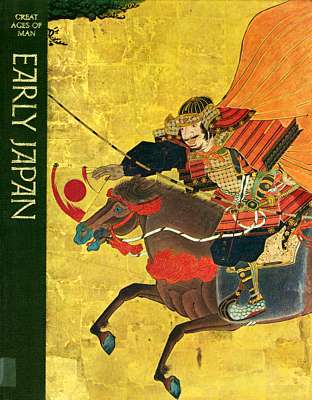
Time-Life Great Ages of Man Series – Early Japan.
NOTE: We have 75,000 books in our library, almost 10,000 different titles. Odds are we have other copies of this same title in varying conditions, some less expensive, some better condition. We might also have different editions as well (some paperback, some hardcover, oftentimes international editions). If you don’t see what you want, please contact us and ask. We’re happy to send you a summary of the differing conditions and prices we may have for the same title.
CONDITION: Light shelf wear, otherwise in Very Good to Like New condition. Seemingly never read or only lightly browsed. Pages are pristine; clean, unmarked, unmutilated, tightly bound.
PLEASE SEE IMAGES BELOW FOR JACKET DESCRIPTION(S) AND FOR PAGES OF PICTURES FROM INSIDE OF BOOK.
DESCRIPTION: Hardcover: 192 pages. Publisher: Time-Life Books Inc. (1968). Dimensions: 10¾ x 8¾ x ¾ inches, 1¾ pounds. 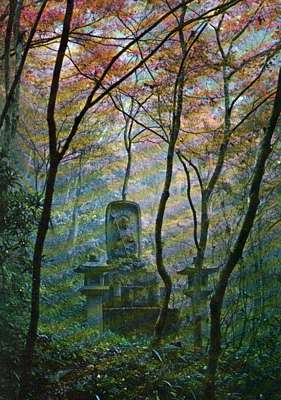
The “Great Ages of Man” series was released in the mid-1960’s. Each volume undertakes to describe the major events that happened in one specific time period (or “age”) in the development of mankind’s civilization(s). The volumes are richly illustrated, and designed as an introduction to the time frame covered. Especially compelling are the artists interpretations or recreations of what various ancient civilizations would have looked like – their architecture, homes, monuments, cities, daily life, jewelry, food, family life, dwellings, occupations, etc. As just one instance, the ruins of Babylon and Ur, Athens and Rome hint at the incredible richness of those fabled cities. The artist’s recreations in this series are simply mind-numbing. This is as close as you can be to actually having been there. Equally noteworthy are the photographic collections of artifacts and relics attributed to the specific age, really exceptional.
The entire series is truly a magnificent introduction to the history of the era. If you could have just one book (or series of books) to introduce the history of humankind, this would have to be it. The overviews are concise and well-written. Together with the illustration and pictures they impart a wonderful mental and emotional “picture” of what life must have been like in various civilizations and at various times. Done in a style so wonderfully characteristic of Time-Life’s publications, these are over-sized “coffee table” type books full of impressive imagery. The pictures of the world’s greatest art and architecture alone are worth the cost of these books. But don’t get the impression that these volumes are “fluff”. While a particular volume might not quite take the place as a university degree, the material is well-written,
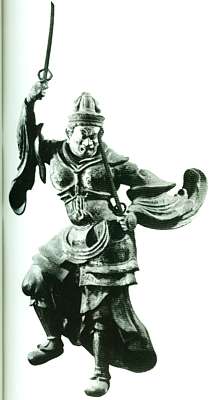 This particular volume is entitled “Early Japan”. The contents include:
This particular volume is entitled “Early Japan”. The contents include:
CHAPTER ONE: A Country of Contradictions. [Picture Essay: A Venerated Land. A View of Early Japan (700-1700 A.D.) Protector or Destroyer: A Sea that Holds the Islands’ Fate. The Beauty and Bounty of a Well-Watered Countryside. Temples and Shrines that Reflect a Unique Reverence for Nature. Mount Fuji: A Serene Volcano: Graceful Symbol of a Nation’s Ideal.]. Japanese Esthetics: A Distinctive Sword Guard. Royal Burials: Hollow-Eyed Clay Figurines. A Seventh Century Nosey Caricature (from the Golden Hall at Horyuji). Geomancy: Ancient Chinese Divination (An Evil-Proof Plan).
CHAPTER TWO: The Elegant Society. [Picture Essay: Tales of Courtly Love. Twelfth Century Calligraphy. Prince Genji. A Ruinous Love Affair that Led to Misery. A Birthday Ceremony Tinged with Irony. Karou: “Fragrant Captain” and a Young Coquette. Sweet Music to Captivate a Troubled Heart. A Diplomatic Game of “Go” to Win a Princess’ Hand.]. A Fierce Protector: A Twelfth Century Wooden Tomb Guardian (Statuette). The Master Quarters of the Fujiwara Family (Quarters for the Emperor). A Lofty Ninth Century Monastery at Mount Muro.
CHAPTER THREE: Rise of the Samurai. [Picture Essay: The Way of the Warrior. A Man of War: The Armor-Clad Samurai. Underpinings: Basic Steps in Self-Defense (A Cotton Breechclout, A Short-Sleeved Kimono, Billowing Pantaloons, Sturdy Shinguards. Disposable Thigh Guards, Metal-Cased Sleeves, A Sheath for the Torso, Broad Shoulder Guards, An Iron Collar, A Cotton Skullcap, A Glowering Mask, A Visored Helment. An Exquisite Brocade.Multiu-Colored Stitching of a Braided Silk Armor Cord. Iron Rib Protection for the Head: The Helment. A Life-Long Condition of Battle Readiness. A Warlord’s Sleeve: Engraved, Gilded Armor from a Twelfth Century Minamoto. ] A Twelfth Century Painting of a Mounted Samurai: The Battle of the Taira and Minamoto Clans. A Thirteenth Century Map: A Feudal Estate (Owned by Two Samurai Brothers). Japan’s First Shogun: Minamoto Yoritomo (a Thirteenth Century Wooden Statuette). Japan’s Shifting Capital City: The Imperial Residence.
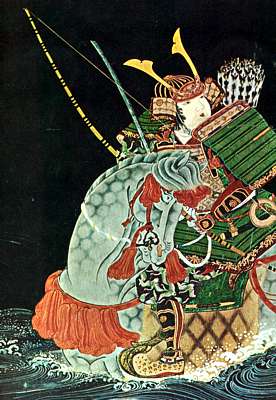 CHAPTER FOUR: Monks and Men-At-Arms. Japanese Buddhism: A Twelfth-Century Healing Buddha. Testing A New Samurai Sword on a Criminal Cadaver. Zen Enlightenment: A Picture of the Unseeable. [Picture Essay: The World in a Garden. Islands of Rock in a Calm Sea of Sand: The Zen Buddhist Ryoanji Temple in Kyoto. In the Solemn Beauty of Sand Against Foliage, Gardens that Were Inspired by Zen Ink Paintings: The Garden of the Silver Pavilion in Kyoto. Clipped Azalea Bushes in a Seventeenth Century Sand Garden. The Hidden Symbolism of a Sacred Grove: Kyoto’s Saihoji Garden. The Teahouse Garden – A Retrea t from the World: Kyoto’s Ura-Senke. A Priest’s Studfy and a Garden to Refresh the Spirit: Kyoto’s Sixteenth Century Zen Diasenin Monastery. Scenic Wonders for Aristocratic Excursions].
CHAPTER FOUR: Monks and Men-At-Arms. Japanese Buddhism: A Twelfth-Century Healing Buddha. Testing A New Samurai Sword on a Criminal Cadaver. Zen Enlightenment: A Picture of the Unseeable. [Picture Essay: The World in a Garden. Islands of Rock in a Calm Sea of Sand: The Zen Buddhist Ryoanji Temple in Kyoto. In the Solemn Beauty of Sand Against Foliage, Gardens that Were Inspired by Zen Ink Paintings: The Garden of the Silver Pavilion in Kyoto. Clipped Azalea Bushes in a Seventeenth Century Sand Garden. The Hidden Symbolism of a Sacred Grove: Kyoto’s Saihoji Garden. The Teahouse Garden – A Retrea t from the World: Kyoto’s Ura-Senke. A Priest’s Studfy and a Garden to Refresh the Spirit: Kyoto’s Sixteenth Century Zen Diasenin Monastery. Scenic Wonders for Aristocratic Excursions].
CHAPTER FIVE: The Country at War. A Muromachi Mountain Landscape Painting. Tatami: Floor Mats in Koto’s Fifteenth Century Aristocratic Mansions. The Fine Art of Serving Tea. [Picture Essay: Designs for Living. Sliding Screens of Translucent Paper. Chopsticks. Festive Sweets. Hishaku: A Ceremonial Wooden Dipper. Chasen: Tea Whisks. Zori: Woven Slippers. Tatmi: Woven Interlocking Floor Mats. A Rustic Woven Raincape. A Collapsible Bamboo Parasol.]
CHAPTER SIX: Through European Eyes. A Painted Screen of a Rice-Planting Ceremony. A Sixteenth-Century Japanese Painting of a Portuguese Ship. Fifth Century Japanese Building Techniques. [Picture Essay: A Poetic Slice of Life. A Monk: Poetical Competition Judge.. A Screen Depicting a Textile Worker. A Screen Depicting a Picture Framer. A Screen Depicting a Tree Peddler. A Screen Depicting a Basket Peddler. A Screen Depicting a Stone Mason. A Screen Depicting a Carpenter. A Screen Depicting a Brazier Seller. A Screen Depicting a Cooper (Barrel Maker). A Screen Depicting a Monkey Trainer. A Screen Depicting Dragon Parade Dancers and a Drummer.].
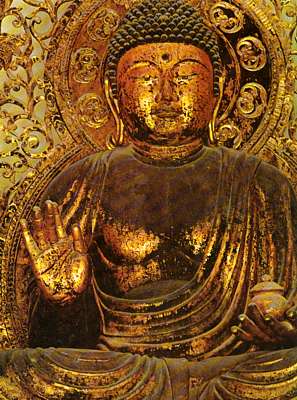 CHAPTER SEVEN: The Nation United. Sixteenth Century Military Leader/Great Unifier Hideyoshi. Militant Monks and the Temple at Honganji. The Portuguese in Asia 1510-1569. Christianity in Japan 1549-1640. [Picture Essay: A Feudal Lord’s Fortress of Beauty. White Heron Castle: An Impregnable Many-Roofed Tower. An Uphill Course to the Castle. Strongpoints to Repel the Enemy: Outer Works and Donjon Strongpoints. Secret Exits, An Iron-Plated Door. Musha Bashiri: A Hall to Arm the “Running Soldiers”. The Princess Apartment: Rooms for Pleasant Living in a Stronghold. Beneath Every Decoration, Iron Shields. The Ornate Tower that Stood for Feudalism.
CHAPTER SEVEN: The Nation United. Sixteenth Century Military Leader/Great Unifier Hideyoshi. Militant Monks and the Temple at Honganji. The Portuguese in Asia 1510-1569. Christianity in Japan 1549-1640. [Picture Essay: A Feudal Lord’s Fortress of Beauty. White Heron Castle: An Impregnable Many-Roofed Tower. An Uphill Course to the Castle. Strongpoints to Repel the Enemy: Outer Works and Donjon Strongpoints. Secret Exits, An Iron-Plated Door. Musha Bashiri: A Hall to Arm the “Running Soldiers”. The Princess Apartment: Rooms for Pleasant Living in a Stronghold. Beneath Every Decoration, Iron Shields. The Ornate Tower that Stood for Feudalism.
CHAPTER EIGHT: A Closed Japan. European Missionaries; Jesuits, Franciscans – A Painting. Hideyoshi’s 17th Century Fan Map of Japanese Conquests in China and Korea. Nobunaga, Hideyoshi, and Ieyasu; Unifiers of Japan (16th-17th Century). [Picture Essay: Kabuki – A Theatre of Escapism. The Strange Conventions of a Theatrical Convention Based on Music, Dancing, and Stylized Acting. Sukeroku: The Entrance of the Hero: An Impressive Display of Courage, Manly Grace, and Wild Bravado. The Heroine: Agemaki, a Courtesan Whose Beauty and Refinement have Won Her the Love of Sukeroku. Tomokirimaru: In a Tableau of Frozen Action, Dramatic Poses Designed to Draw Attention to a Significant Turn of Events. Sukeroku and Ikyu: The Formalized Violence of a Duel to the Death, a Conflict Conveyed in the Measured Sequence of Dance-Like Motions. The Closing Moments of the Play: The Hero’s Narrow Escape and Happy Reunion with His Brave Mistress.]. Early Japanese Civilization: Crossroad Civilizations Between East and West: India, Southeast Asia, China, Japan, Western Exploration and Colonization. Chronology: A Listing of Significant Events in the History of Early Japan: Politics and Warefare – Arts and Religion. (Archaic – Early Historic – Nara – Heian – Kamakura – Ashikaga – Country at War – Tokugawa.
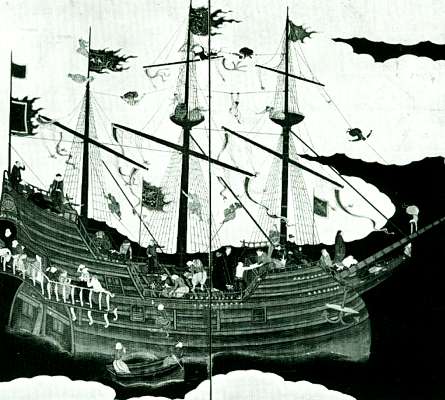 ADDITIONAL BACKGROUND:
ADDITIONAL BACKGROUND:
STONE AGE JAPAN: During the Mesolithic period important large-scale changes took place on our planet. As the climate was getting warmer and the ice sheets were melting, some areas in the northern latitudes actually rose as they were being freed from the weight of the ice. At the same time the sea levels rose drowning low-lying areas. This resulted in major changes in the land worldwide. The Japanese islands for instance were separated from the Asian mainland. The oldest evidence of pottery manufacture in the world has been found originating from the Neolithic period in an archaeological site known as Odai Yamamoto, in Japan. Fragments from a specific vessel have been identified/radio-carbon dated as being between 14,920 and 16,500 years old.
IRON AGE JAPAN: In Iron Age Japan items made from iron such as tools, weapons, and decorative objects, are postulated to have entered Japan during the late Yayoi period, between about 300 BC and 300 AD. Though perhaps as late as the succeeding Kofun period, between about 250 and 500 AD, these iron items most likely came to Japan through contacts with the Korean Peninsula and China.
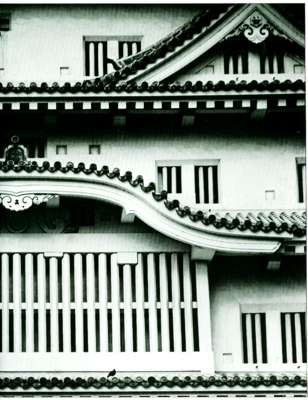
Distinguishing characteristics of the Yayoi period include the appearance of new pottery styles and the start of intensive rice agriculture in paddy fields. Yayoi culture flourished in a geographic area from southern Kyūshū to northern Honshū. The Kofun and the subsequent Asuka periods are sometimes referred to collectively as the Yamato period. The word kofun is Japanese for the type of burial mounds dating from that era.
BRONZE AGE JAPAN: The introduction of Bronze Age technology to the Japanese archipelago occurred during the beginning of the Early Yayoi period, about 300 BC. This period witnessed the introduction of both metalworking and agricultural practices brought in by settlers arriving from the continent. Bronze and iron smelting techniques in particular spread to the Japanese archipelago through contact with other ancient East Asian civilizations. This was particularly due to immigration from and trade with the Korean peninsula and ancient Mainland China. Iron was mainly used for agricultural and other tools, whereas ritual and ceremonial artifacts were mainly made of bronze.

ANCIENT JAPANESE CERAMICS:: The earliest Japanese pottery was made around the 11th millennium B.C. Jōmon ware emerged in the 6th millennium B.C. and the plainer Yayoi style in about the 4th century B.C. This early pottery was soft earthenware, fired at low temperatures. The potter's wheel and a kiln capable of reaching higher temperatures and firing stoneware appeared in the 3rd or 4th centuries A.D., probably brought from China via the Korean peninsula. In the 8th century, official kilns in Japan produced simple, green lead-glazed earthenware.
Unglazed stoneware was used as funerary jars, storage jars and kitchen pots up to the 17th century. Some of the kilns improved their methods. From the 11th to the 16th century, Japan imported much porcelain from China and some from Korea. The Japanese overlord Toyotomi Hideyoshi's attempts to conquer China in the 1590s were dubbed the "Ceramic Wars" the emigration of Korean potters appeared to be a major cause. One of these potters, Yi Sam-pyeong, discovered the raw material of porcelain in Arita and produced first true porcelain in Japan.

In the 17th century, conditions in China drove some of its potters into Japan, bringing with them the knowledge to make refined porcelain. From the mid-century, the Dutch East India Company began to import Japanese porcelain into Europe. At this time, Kakiemon wares were produced at the factories of Arita, which had much in common with the Chinese Famille Verte style. The superb quality of its enamel decoration was highly prized in the West and widely imitated by the major European porcelain manufacturers. In 1971 it was declared an important "intangible cultural treasure" by the Japanese government.
In the 20th century, interest in the art of the village potter was revived by the Mingei folk movement led by potters Shoji Hamada, Kawai Kajiro and others. They studied traditional methods in order to preserve native wares that were in danger of disappearing. Modern masters use ancient methods to bring pottery and porcelain to new heights of achievement at Shiga, Iga, Karatsu, Hagi, and Bizen. A few outstanding potters were designated living cultural treasures. In the old capital of Kyoto, the Raku family continued to produce the rough tea bowls that had so delighted connoisseurs. At Mino, potters continued to reconstruct the classic formulas of Momoyama-era Seto-type tea wares of Mino, such as Oribe ware. By the 1990s many master potters worked away from ancient kilns and made classic wares in all parts of Japan.

The Japanese also ranked high as metalworkers. This was particularly true of their sword furniture, the jewelry of the Japanese nobleman, especially showing the subtle skill of the artist in manipulating hard and soft metals. In enriching the fittings many processes of metal ornamentation-relief carving, relief inlay or appliqué, overlay, incised and recessed carving-are employed. It is the combination of techniques and alloys which makes their work of outstanding interest to jewelers as well as to the amateur. Today these fittings are often worn as jewelry in the West. In Japan sword furniture is frequently signed by masters as well known as famous painters.
SHIPPING & RETURNS/REFUNDS: We always ship books domestically (within the USA) via USPS INSURED media mail (“book rate”). Most international orders cost an additional $17.99 to $48.99 for an insured shipment in a heavily padded mailer. There is also a discount program which can cut postage costs by 50% to 75% if you’re buying about half-a-dozen books or more (5 kilos+). Our postage charges are as reasonable as USPS rates allow. ADDITIONAL PURCHASES do receive a VERY LARGE discount, typically about $5 per book (for each additional book after the first) so as to reward you for the economies of combined shipping/insurance costs.

Your purchase will ordinarily be shipped within 48 hours of payment. We package as well as anyone in the business, with lots of protective padding and containers. All of our shipments are fully insured against loss, and our shipping rates include the cost of this coverage (through stamps.com, Shipsaver.com, the USPS, UPS, or Fed-Ex). International tracking is provided free by the USPS for certain countries, other countries are at additional cost.
We do offer U.S. Postal Service Priority Mail, Registered Mail, and Express Mail for both international and domestic shipments, as well United Parcel Service (UPS) and Federal Express (Fed-Ex). Please ask for a rate quotation. Please note for international purchasers we will do everything we can to minimize your liability for VAT and/or duties. But we cannot assume any responsibility or liability for whatever taxes or duties may be levied on your purchase by the country of your residence. If you don’t like the tax and duty schemes your government imposes, please complain to them. We have no ability to influence or moderate your country’s tax/duty schemes.

If upon receipt of the item you are disappointed for any reason whatever, I offer a no questions asked 30-day return policy. Send it back, I will give you a complete refund of the purchase price; 1) less our original shipping/insurance costs, 2) less non-refundable eBay payment processing fees. Please note that eBay does NOT refund payment processing fees. Even if you “accidentally” purchase something and then cancel the purchase before it is shipped, eBay will not refund their processing fees. So all refunds for any reason, without exception, do not include eBay payment processing fees (typically between 5% and 15%) and shipping/insurance costs (if any). If you’re unhappy with eBay’s “no fee refund” policy, and we are EXTREMELY unhappy, please voice your displeasure by contacting eBay. We have no ability to influence, modify or waive eBay policies.
ABOUT US: Prior to our retirement we used to travel to Europe and Central Asia several times a year. Most of the items we offer came from acquisitions we made in Eastern Europe, India, and from the Levant (Eastern Mediterranean/Near East) during these years from various institutions and dealers. Much of what we generate on Etsy, Amazon and Ebay goes to support The Hermitage Museum in St. Petersburg, as well as some other worthy institutions in Europe and Asia connected with Anthropology and Archaeology. Though we have a collection of ancient coins numbering in the tens of thousands, our primary interests are ancient jewelry and gemstones. Prior to our retirement we traveled to Russia every year seeking antique gemstones and jewelry from one of the globe’s most prolific gemstone producing and cutting centers, the area between Chelyabinsk and Yekaterinburg, Russia. From all corners of Siberia, as well as from India, Ceylon, Burma and Siam, gemstones have for centuries gone to Yekaterinburg where they have been cut and incorporated into the fabulous jewelry for which the Czars and the royal families of Europe were famous for.

My wife grew up and received a university education in the Southern Urals of Russia, just a few hours away from the mountains of Siberia, where alexandrite, diamond, emerald, sapphire, chrysoberyl, topaz, demantoid garnet, and many other rare and precious gemstones are produced. Though perhaps difficult to find in the USA, antique gemstones are commonly unmounted from old, broken settings – the gold reused – the gemstones recut and reset. Before these gorgeous antique gemstones are recut, we try to acquire the best of them in their original, antique, hand-finished state – most of them centuries old. We believe that the work created by these long-gone master artisans is worth protecting and preserving rather than destroying this heritage of antique gemstones by recutting the original work out of existence. That by preserving their work, in a sense, we are preserving their lives and the legacy they left for modern times. Far better to appreciate their craft than to destroy it with modern cutting.
Not everyone agrees – fully 95% or more of the antique gemstones which come into these marketplaces are recut, and the heritage of the past lost. But if you agree with us that the past is worth protecting, and that past lives and the produce of those lives still matters today, consider buying an antique, hand cut, natural gemstone rather than one of the mass-produced machine cut (often synthetic or “lab produced”) gemstones which dominate the market today. We can set most any antique gemstone you purchase from us in your choice of styles and metals ranging from rings to pendants to earrings and bracelets; in sterling silver, 14kt solid gold, and 14kt gold fill. When you purchase from us, you can count on quick shipping and careful, secure packaging. We would be happy to provide you with a certificate/guarantee of authenticity for any item you purchase from us. There is a $3 fee for mailing under separate cover. I will always respond to every inquiry whether via email or eBay message, so please feel free to write.

